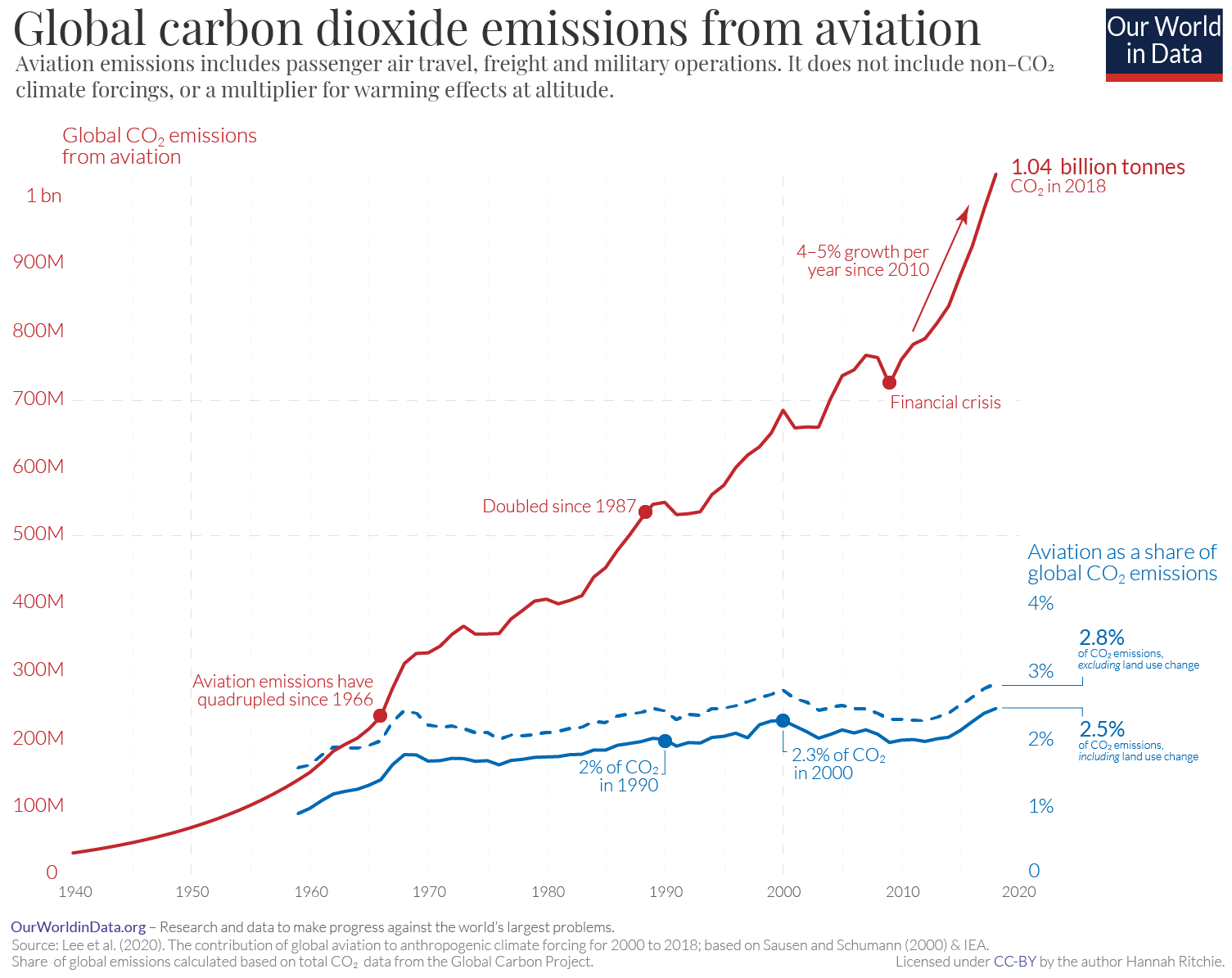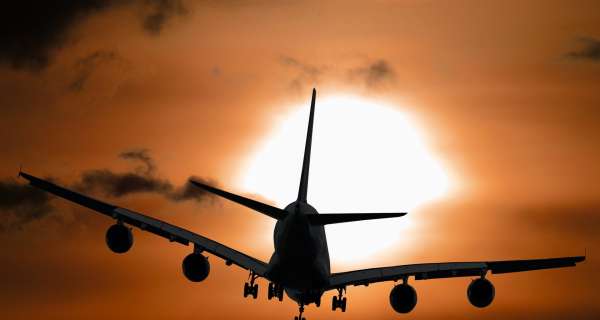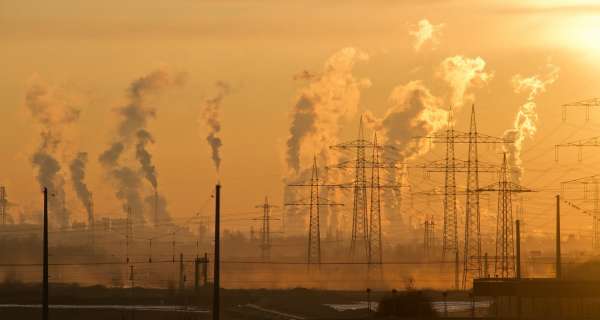Flying is a very controversial topic in climate debates. There are a few reasons for this.
The first is the disconnect between their role in our personal and collective carbon emissions. Air travel dominates the individual contribution of a frequent traveler to climate change. However, aviation in general accounts for only 2.5% of global carbon dioxide (CO2) emissions. This is because there are great inequalities in the number of people who fly; many cannot or cannot afford to fly.
The second is how aviation emissions are attributed to countries. CO2 emissions from domestic flights are accounted for in a country's emissions accounts. International flights are not, but they are counted as their own category: "bunker fuels". The fact that they are not included in any country's emissions means that there is little incentive for countries to reduce them.
It is also important to note that, unlike the more common greenhouse gases (carbon dioxide, methane, or nitrous oxide), non-CO2 aviation forcings are not included in the Paris Agreement. This means that they could easily be overlooked, especially since international aviation is not included in any country's inventories or emissions targets.
What role do aviation play in global emissions and climate change? In this article, we take a look at the key numbers that are useful to know.
Global aviation (including national and international; passengers and cargo) represents:
- 1.9% of greenhouse gas emissions (which includes all greenhouse gases, not just CO2)
- 2.5% of CO2 emissions
- 3.5% "effective radiative forcing" - a closer measure of its impact on warming.
The last two numbers refer to 2018 and the first to 2016, the last year for which such data is available.

The climate impacts of n-CO2 mean that aviation accounts for 3.5% of global warming
Aviation counts for about 2.5% of global CO2 emissions, but its overall contribution to climate change is higher. This is because air travel doesn't just emit CO2 - it affects the climate in several more complex ways.
In addition to emitting CO2 from burning fuel, the plans affect the concentration of other gases and pollutants in the atmosphere. They result in a short-term increase, but a long-term decrease in ozone (O3); a decrease in methane (CH4); water vapor emissions; Soot; sulfur aerosols; and trails of water. While some of these impacts cause warming, others induce a cooling effect. In general, the heating effect is stronger.
David Lee et al. (2020) quantified the overall effect of aviation on global warming when all these impacts were included. For this, they calculated the so-called "radiative forcing". Radiative forcing measures the difference between the incoming energy and the energy radiated back to space. If more energy is absorbed than is radiated, the atmosphere becomes warmer.
In this graph, we see their estimates of the radiative forcing of the different elements. When we combine them, aviation accounts for about 3.5% of effective radiative forcing: that is, 3.5% of warming.
Although CO2 receives most of the attention, it accounts for less than half of this warming. Two-thirds (66%) come from forcings other than CO2. Contrails (water vapor trails from aircraft exhaust) account for the majority.
We still don't have the technologies to decarbonize air travel
The contribution of aviation to climate change (3.5% of warming or 2.5% of CO2 emissions) is usually less than people think. It is currently a relatively small portion of emissions compared to other sectors.
The key challenge is that it is particularly difficult to decarbonize. We have solutions to reduce the emissions of many of the largest emitters, such as energy or road transport, and now it is a matter of scaling them. We can implement renewable and nuclear energy technologies and transition to electric cars. But we still don't have proven solutions to tackle aviation.
Some design concepts are emerging: Airbus, for example, has announced plans to have the first zero-emission aircraft by 2035, using hydrogen fuel cells. Power plans may be a viable concept, but they are likely to be limited to very small aircraft due to technology and battery capacity limitations.
Innovative solutions may be on the horizon, but they are likely a long way off.
























0 Comments